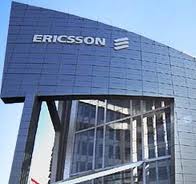  Ericsson said that it successfully supported Telstra, Australia’s leading telecommunications operator, to test APT700 (Asia-Pacific Telecommunity 700MHz) spectrum using Ericsson’s new APT700 radio equipment.
This marks another important milestone in the introduction of new low band LTE frequencies and the development of the LTE ecosystem.
Mike Wright, Telstra Executive Director Networks, said: ”This band of spectrum allows us to build the next generation of mobile services. Through this testing we are keen to understand how the network works with the 700 MHz spectrum, how commercial devices interact with the network and how we will be able to achieve faster speeds, more capacity and wider 4G coverage.”
The first call on 700MHz was made on Telstra’s live network across two test sites in a regional location in Australia using a pre-release smartphone.
Håkan Eriksson, CEO Ericsson Australia and New Zealand, said: “This is the latest in a number of successful technology trials undertaken with Telstra aimed at readying the operator’s network for the release of APT700 digital dividend.”
“The APT700 band has the ability to provide excellent in-building coverage as well as delivering wide area coverage in regional and rural areas, providing operators with increased capacity and performance, and users with a superior experience,” Eriksson added.
Telstra has been influential in driving adoption of this band with the support of Australian regulators, the Australian Communications Media Alliance (ACMA).
Ericsson research, released in the report ”APT700 – A truly global LTE band”, shows that the band is gaining momentum across Asia and Latin America and has the potential to serve over 2.1 billion people.
Ericsson drives global standards to achieve economies of scale for the entire telecommunications industry – network infrastructure, devices, and ultimately operators and consumers, thereby maximizing the success and uptake of new bands in global markets.
Ericsson is the market leader in LTE. Today, 50 percent of the world’s LTE smartphone traffic is served by Ericsson networks, which is more than double the traffic of our closest competitor. |